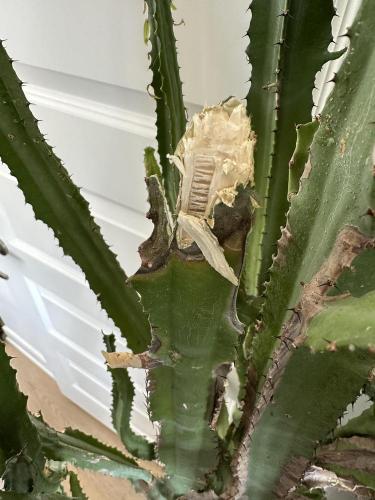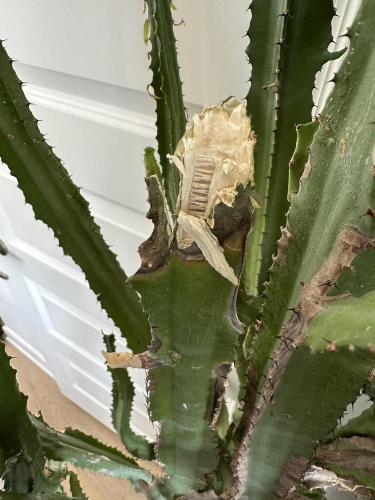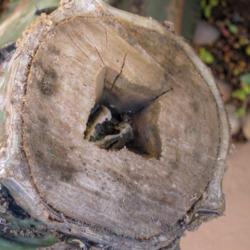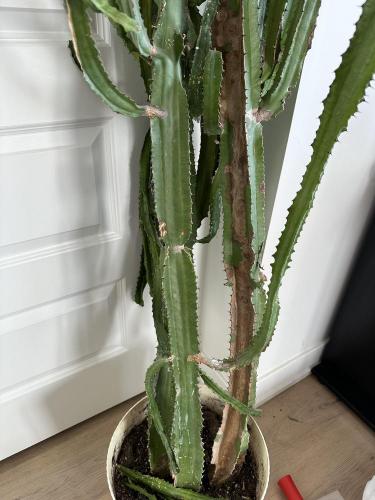OK, I see. I was making assumptions based on the first picture.

Corking is a much-used and generally not very specific term that I don't think applies here. Usually refers to the development of a hard, brown outer layer replacing otherwise green, healthy skin near the base of a plant. Somewhat normal with advancing age for some plants. Not necessarily associated with strong woody fibers, just the hardening and dying off of the skin.
What you've got there is just regular wood in the tree. With many/most tree-like succulents, the structural fibers do not usually develop right away. This takes time (years) and is not evident on the stems near the top of the plant. Go down a few years and this wood becomes increasingly evident, expanding in volume with advancing age, eventually nearly filling the stem.
Here are the stumps of two tree-like succulents, one a Euphorbia species that is much larger than yours.
The hollow interior is the result of wood not being present in that area. I think this is more or less normal. The hollow area tends to become smaller as the wood develops and fills the stem. I would just leave it alone. You can prune back the exposed part if you like so you don't have to see the inside.





